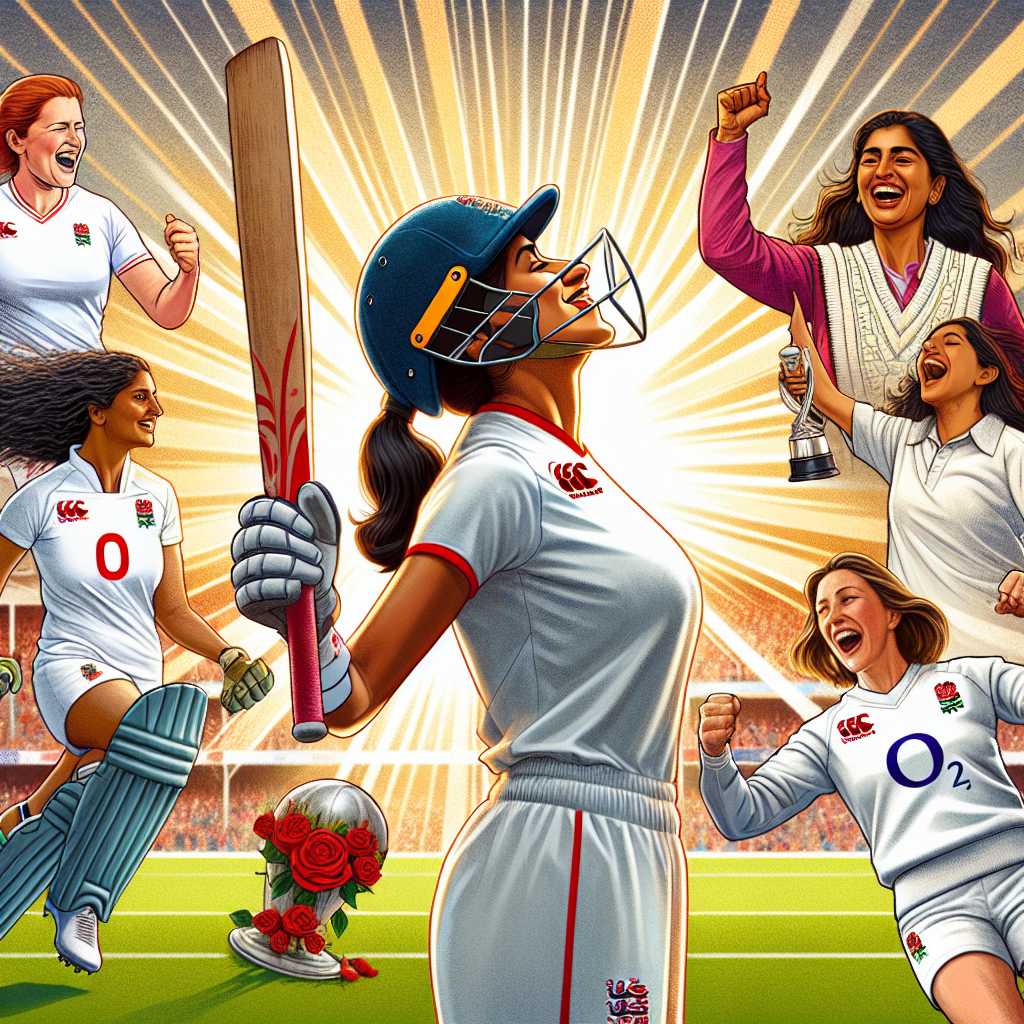###
The Triumphs and Challenges of England Women’s National Teams in Sport
Introduction to England Women’s National Teams in Sport
Women’s sport has grown significantly over the past few decades. In England, particularly, the growing success, media attention, and public interest in women’s national teams across various sports are notable. Governance by bodies such as The Football Association (FA), English Cricket Board (ECB), and Rugby Football Union (RFU) for their respective sports has often mirrored wider societal changes towards gender equality and an increased recognition of the social and commercial value of women’s sport.
England Women’s Football Team: Lionesses on the Rise
The England women’s football team, affectionately known as the Lionesses, have made commendable strides on the international stage. With their commendable World Cup performances, including a third-place finish in 2015, and triumphant victory at UEFA Women’s Euro 2021, they have captured the hearts of many and significantly raised the profile of women’s football in England.
The domestic landscape has also evolved with the development of the FA Women’s Super League (WSL), which operates as the top level of women’s football in England. The professionalization has attracted talent from abroad and improved the standard and competitiveness of the league, all contributing to a stronger national team.
Their success is not by mere chance; it can be attributed to structured youth development programs and increased investment from both governing bodies and independent organizations. The participative base has also expanded, with more young girls joining grassroots clubs, inspired by role models such as Lucy Bronze, Steph Houghton, and Ellen White.
Waves of Success: England Women’s Cricket Team
England women’s cricket team has been at the forefront of international cricket with consistent performances throughout the years. Their multiple Ashes series triumphs, World Cup wins in 1973 and 2009, and victory in the 2017 ICC Women’s World Cup are among their vast list of achievements.
With players like Charlotte Edwards and Heather Knight leading by example over different eras, professionalism has skyrocketed, mirrored by competitive central contracts introduced by the ECB. The coverage of women’s cricket is at an all-time high due to broadcast deals and online streaming accessibility, which continues to build a broad fan base.
In addition to this, programs aimed at encouraging youthful participation such as ‘Chance to Shine’ have helped cultivate talent pools across England while showcasing the potential for career building within the sport of cricket.
Strength Through Adversity: England Women’s Rugby Team
Known as the Red Roses, England’s women’s rugby team stands tall on the global scene. Not only has it enjoyed numerous Six Nations Grand Slams but won the prestigious Rugby World Cup in 1994 and 2014.
This success highlights their ongoing development and commitment to excellence despite facing disparities in resources and coverage when compared to their male counterparts or even other female sports teams. Nevertheless, with increasing attention to women’s rugby union around contracts and visibility through fixtures held ahead of men’s game or doubleheaders with men’s matches, the women’s team keeps breaking barriers.
Furthermore, initiatives like ‘Inner Warrior’ camps encourage women and girls to pick up rugby, fighting ingrained stereotypes while fostering rugby-specific skills that filter into club systems and potentially growth for international representation.
Challenges on The Pathway Heavily Trotted
Despite significant progressions in visibility, sponsorships, audience engagement, and investment for English women’s sports teams – challenges remain persistent. Issues such as equal pay, adequate facilities, airtime equity amongst traditional broadcast media platforms, cultural stigmas linked to female athleticism, amongst others continue to test these teams.
Inequity in funding which limits access for girls particularly from underprivileged backgrounds can hinder diversity within national teams. Similarly, social media exposure though imperative for growth equally brings about scrutiny and sometimes abuse that female athletes face disproportionately compared to male athletes.
The progress made notwithstanding, there’s ample room for further advancements within this domain; through constant dialogue between stakeholders: athletes, associations, fans, and corporate partners.
Notes
Conclusion: Continuous Performance meets Imminent Desire for Equality
These accomplishments serve as proof that not only are English women’s sport national teams a force globally but also adore finer attention at home. It is imperative these meritocratic heights translate into wider benevolence; erasing gender divides that acutely influence infrastructure availability to access potential growth avenues.
Championing gender equality can amplify these strides into broad daylight while discounting archaic prejudices about what women can achieve—in sport as in any area of life. As England’s national teams continue playing with defiance against worldwide oppositions ethnicity or nationality-wise but also against societal constructs; they exemplify sport’s power as a catalyst for transformation—heralding yet graver prospects for gender parity not just within their confines but reflective onto society at large.

